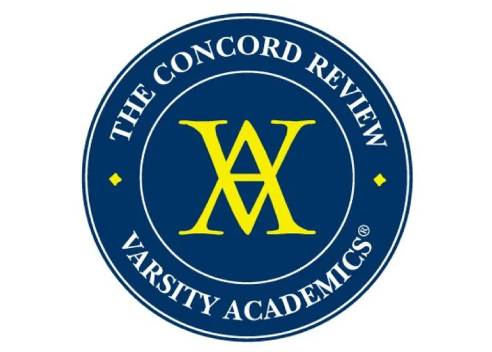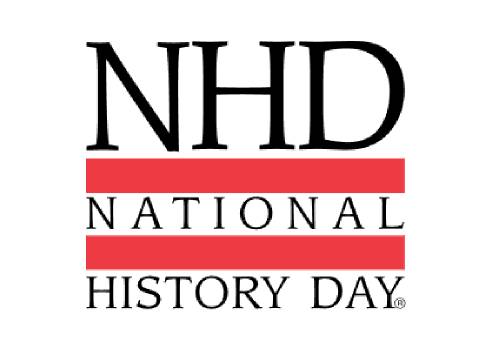Physics Research Ideas for High School Students
Conducting research allows high school students to systematically and scientifically explore and analyze a problem, gain new knowledge, solving problems, or verify existing theories. This process involves posing questions, formulating hypotheses, designing experiments, collecting data, conducting experiments, and writing papers.
If high school students are interested in physics research, it can ignite their passion, develop logical thinking and analytical skills, and enhance teamwork and communication abilities during experimental design and hands-on activities. Additionally, engaging in physics research can significantly boost college applications, demonstrating passion, initiative, and curiosity to admissions officers.
In this article, we will introduce 18 physics research topics suitable for high school students, which may inspire your interest or give you research inspiration. At the same time, we also consider that some high school students want to further demonstrate their research results or knowledge in physics, so we have also compiled some physics competitions suitable for high school students to participate in, looking forward to high school students to give full play to their talents in physics research and explore the mystery of physics in depth.
18 Original Physics Research Ideas for High School Students
1. Impact of Roof and Sectional Shapes on Natural Ventilation in Large-Space Buildings Using Computational Fluid Dynamics (CFD)
This project analyzes different roof and sectional shapes to study their impact on natural ventilation through CFD simulations.
2. Urban Atmospheric Turbulence Studies
This research uses modern CFD methods to study the effects of urban building distribution on atmospheric turbulence, relevant to the increasing urban population.
3. Technical Feasibility and Impact of Carbon Emission Reduction and Carbon Capture on Achieving Net-Zero
This project explores the supply cost curves of various carbon capture and storage technologies and models their impact on achieving carbon neutrality.
4. Impact of Extreme Heat in Urban Areas
This study statistically analyzes the effects of extreme heat on public health and urban economic development, suitable for students interested in environmental science and public policy.
5. Corporate Response Strategies to Environmental Policies
Analyzes corporate strategies and their unintended consequences in response to ozone environment policies, ideal for students interested in environmental science and policy.
6. Environmental Protection Models Based on Temporal and Spatial Characteristics
This research explores the causes and influencing factors of ecological problems, using statistical and computer science knowledge to process environmental data.
7. Bioaccumulation of Heavy Metals
Evaluates the bioaccumulation levels of heavy metals in plants and animals using portable X-ray fluorescence analysis, providing insights for food safety and ecological restoration.
8. Numerical Simulation of Shockwave Oscillations on Supercritical Airfoils
This project uses numerical simulations to study shockwave oscillations on transonic aircraft wings, analyzing the effects of turbulence models.
9. Signal Transmissio
Theoretical research on the physical mechanisms of signal amplification and compression during transmission, exploring new approaches for better information processing.
10. Design and Simulation of Novel Optoelectronic Waveguides
Studies the effects of different structures and sizes on the performance and application scenarios of optoelectronic waveguides, providing references for future fabrication.
11. Occurrence Rate of Stellar Tidal Disruption Events by Black Holes
Estimates the occurrence rate of stars being tidally disrupted by black holes, based on simplified assumptions and stellar kinematics.
12. Detection of Specific Molecules
Investigates the vibrational frequencies of molecular structures to detect their presence through radiation spectra, aiming to calculate frequencies for organic or long molecules.
13. Sharpness Identification in Autofocus Systems Using Non-Reference Images
Explores key sharpness discrimination functions in refocusing algorithms, visualizing image sharpness as mathematical functions.
14. Study of Thermophysical Properties of Nanofluids
Explores key sharpness discrimination functions in refocusing algorithms, visualizing image sharpness as mathematical functions.
15. "Natural Evolution" in 2D Network Structures
Simulates the effects of "natural forces" in network structures, studying the random processes required to model natural randomness.
16. Physics of Figure Skating
Analyzes the physical principles behind figure skating movements, studying how angular momentum conservation and moment of inertia contribute to the sport's aesthetics.
17. Segmentation Algorithms for Unstained Cell Images
Utilizes topological mathematical morphology-based segmentation methods for simple cell segmentation, applicable to medical image segmentation and recognition.
18. Research on Absorption Refrigeration Systems Using Waste Heat Recovery
Investigates methods for cooling using waste heat, simulating refrigerant thermophysical properties and system performance under different conditions to optimize system parameters.
Another option—the Embark Exploration Program
After reading these physics research ideas, have you been inspired to do research? If you are in a confused stage of wanting to start an physics journey but don't know where to start, you might consider joining the Embark Exploration Program. In this project, our professional mentors will tailor research topics and research plans based on your learning situation. Through this process, you will not only gain an unforgettable economics research experience but also have one-on-one exchanges with mentors from world-renowned universities to help you with your research in all aspects.
For more details and to start the application, please click here.
5 TOP Physics Competitions for High School Students
1. International Physics Olympiad (IPhO)
IPhO is a prestigious global physics competition for high school students, testing their theoretical and experimental physics skills in areas such as classical mechanics, electromagnetism, thermodynamics, and quantum mechanics. Recognized as one of the most esteemed physics competitions worldwide, IPhO winners often gain significant academic recognition.
Skills Developed: Participation in IPhO hones critical thinking, problem-solving, and experimental skills.
Eligibility: High school students selected through national and regional competitions.
Dates: July 21-29, 2024.
Costs: Participation is free, but students must cover their travel expenses. Accommodation and meals are provided by the host.
Awards: Gold, silver, and bronze medals, along with honorable mentions.
2. Regeneron International Science and Engineering Fair (ISEF)
ISEF is the largest and most established international science fair, covering various disciplines including physics. Students present their research projects, which must win at an affiliated regional fair to qualify. ISEF attracts thousands of students globally each year, with winners frequently receiving admission to top universities and scholarships.
Skills Developed: Enhances research capabilities, innovation, and scientific communication.
Eligibility: High school students who win at ISEF-affiliated regional fairs.
Dates: May 10-16, 2025.
Costs: $25 registration fee.
Awards: Scholarships up to $75,000, with a total prize pool of $9 million.
3. ExploraVision
Sponsored by Toshiba and the National Science Teaching Association (NSTA), this competition requires teams of 2-4 students to propose technological solutions for the next ten years. Since 1992, over 450,000 students have participated, making it a highly influential STEM competition.
Eligibility: High school students from the United States and Canada.
Skills Developed: Fosters innovative thinking, teamwork, and project management skills.
Dates: Annual application deadline in January, regional winners announced in April, national winners in May, and an awards ceremony in June.
Costs: Free.
Awards: Total prize pool of $240,000, with winners receiving fully funded trips to Washington, D.C. for the awards ceremony.
4. International Olympiad on Astronomy and Astrophysics (IOAA)
IOAA is designed to inspire interest in astronomy and astrophysics. It includes theoretical exams, observational tests, and planetarium-based questions. Provides a unique platform for astronomy enthusiasts to compete and exchange ideas globally.
Skills Developed: Enhances knowledge in astronomy, problem-solving, and scientific analysis.
Eligibility: High school students under 20 years old who have not completed high school education by January 1st of the competition year.
Dates: August 17-27, 2024.
Costs: Participation is free, but students must cover travel costs. The host provides accommodation and meals.
Awards: Gold, silver, and bronze medals, and certificates of merit.
5. Conrad Challenge
The Conrad Challenge is a globally recognized competition that encourages high school students to apply science, technology, engineering, and mathematics (STEM) to solve real-world problems. The competition aims to inspire the next generation of entrepreneurs and innovators by promoting critical thinking, collaboration, and creativity.Teams of 2-5 students propose innovative solutions in fields such as aerospace, health, cyber technology, and energy.
Skills Developed: Develop creativity, teamwork, and project management skills. The Conrad Challenge offers opportunities to present projects at the Innovation Summit and gain scholarships and networking opportunities.
Eligibility: Students in grades 9-12.
Dates: Project proposals are typically submitted in the fall.
Costs: Free to participate.
Awards: Scholarships and various other prizes.
Online competition coaching assistance
Embark was founded in 2016. It is an educational institution focusing on customized scientific research training for teenagers. The core team members are all master's and doctoral graduates from prestigious American universities. Since its establishment, it has exclusively signed more than 3,000 mentors from the Ivy League, MIT, California Institute of Technology, Johns Hopkins JHU, Carnegie Mellon CMU, Top 30 U.S. Universities, National Key Laboratories, UK G5, Max Planck Institute, ETH Zurich, National University of Singapore, Nanyang Technological University, and other world-renowned universities. It has guided students to win nearly a thousand awards in major global scientific research competitions through customized scientific research training and helped them successfully enter world-renowned universities such as Harvard, Stanford, Princeton, Oxford, and Cambridge.
You can check out Prestigious STEM Competitions for more one-on-one online competition coaching.



